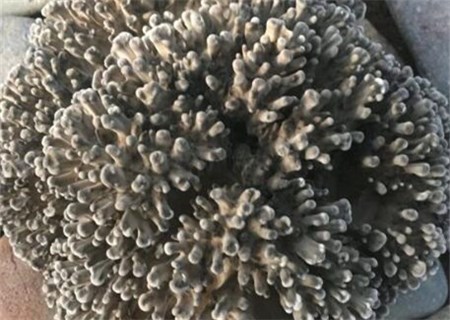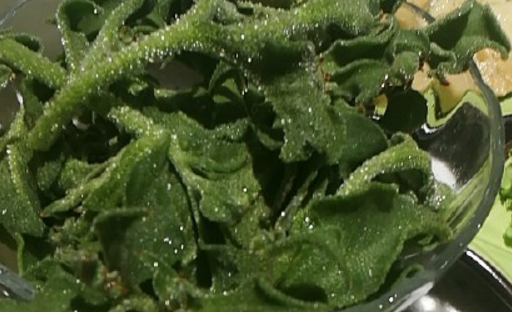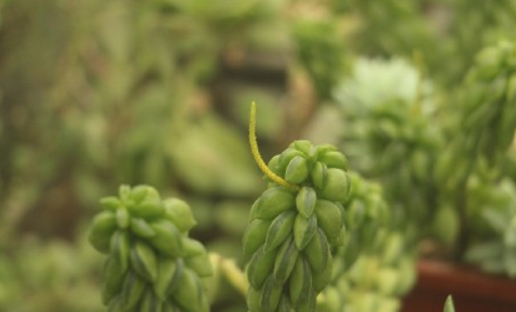What are the planting methods of chestnut mushroom (scientific name Grifola frondosa)? What is the effect and effect? How do you cook it?
Chestnut mushroom is rich in amino acids, protein and other trace elements. With mushroom-like aroma, tender meat, taste like shredded chicken, crisp like magnolia. So do you know the planting methods of chestnut mushrooms? What is the effect and effect? How do you make it delicious?

What are the planting methods of chestnut mushroom
(1) basic requirements for the production of chestnut mushrooms
1. Temperature: the production temperature range is 16-30 and the optimum temperature is 22-28.
2, humidity: suitable humidity 80-95%, keep the air fresh during the growth process, protected cultivation should pay attention to ventilation.
3. Illumination: strong scattered light is needed in the growth process of chestnut mushroom to avoid direct sunlight. The light intensity is 200-1000 lux.
4. The production site shall not be waterlogged and stagnant. The pH value of the soil is required to be 5-6.5, and the nutrients needed in the growth process have been matched in the process of bacterial bag production. There is no need to add nutrients.
(2) production materials of chestnut mushroom 1, special strains. 2. Cottonseed hull, wheat bran, chestnut branch sawdust and so on. 3. Special plastic bags. 4. High temperature disinfection equipment. 5. Construction of production sites and facilities. 6. Product packaging materials.
(3) production process 1. Mycelium original seed culture. 2. Preparation and disinfection of bacterial bag materials. 3. Inoculation with bacteria bag. 4. Construction of semi-underground bacterial shed in Bei Yang. 5. The chestnut mushroom was cultured in the bacterial bag. 6. Picking and packing of chestnut mushroom.
(4) cultivation methods
1. Land selection: cultivation in open field with high topography, sunny direction, convenient drainage and irrigation, suitable for sandy soil, and it is better to have coarse sand. In order to prevent the infection of miscellaneous bacteria, it is best to choose the newly opened raw land, the soil quality is too fat, too fine, too sticky is not good.
2. The preparation of the cultivation bed: the cultivation bed should be arranged from east to west, 2.5-3 meters long, 0.45-0.55 meters wide, 0.25-0.35 meters deep and 0.8-1 meters apart. After the cultivation bed is dug, first pour a lot of water, then sprinkle a thin layer of lime to disinfect (see white), and then sprinkle a layer of trichlorfon powder on the lime powder to control underground pests.
3, code put bacteria bag: after completing the above process, backfill 0.02 meters, then discharge bacteria bag, bed width 0.45 meters when the code 4 lines, width 0.55 meters code 5 lines, the code should be close, horizontal and vertical.
4, fill the soil pack: after the bacterial bag is ready, backfill the soil, more than 0.01 meters beyond the bacterial bag, then use a 0.5-meter-wide woven bag around the pit wall, and sprinkle a layer of pebbles on the bed to prevent chestnut mushrooms from being stained with soil.
5. Build a shade shed: insert the frame high in the north and low in the south according to the east and west of the cultivation bed, and put up plastic and grass curtains to adjust temperature, moisturize, prevent wind and sand and direct sunlight, and keep chestnut mushrooms fresh and tender. 5. under the natural conditions of mushroom production in May, attention should be paid to the management of young mushrooms. The temperature of 22-26 ℃ and relative humidity of 80-95% should be maintained in the shed, and suitable moisture should be maintained in the cultivation bed. When spraying water to increase humidity, the fog droplets should be fine, and the mouth of the sprayer should be upward to avoid washing out the young mushrooms. The suitable period for the growth of chestnut mushroom is from early May to early September. Generally, the second crop will grow after 20 days of picking, and three crops can be harvested in a year. Water should be watered 2-3 times after each harvest, the bacterial bag should be soaked with water, and the young mushroom should be managed according to the management method of young mushroom.
(5) picking standard when the fungal stalk and the back of the canopy just appear porous, and the periphery of the canopy is yellow or black, it should be harvested in time, and do not water 2-3 days before harvest.
(6) production cost and benefit accounting 1. Mycelium production: 2-3 yuan per bottle. 2. Bacterial bag material: 0.8-1.0 yuan per bag. 3. Venues and facilities: 6-7 yuan per square meter. 4. Output: 0.15-0.25 kg / bag. 5. Product price: 16-20 yuan / kg. 6. The benefit is 1.2-1.5 yuan per bag.
(7) Development prospects Farmers in mountainous areas can use their own contracted orchard rows or courtyards to cultivate 10-20,000 bags during the suitable temperature period from May to September, and the annual household income will increase by 10-20,000 yuan. It can speed up the pace of getting rich for farmers in mountainous areas.
What is the effect and function of chestnut mushroom
1. Chestnut mushroom can protect the brain development.
Chestnut mushroom this food contains some trace element zinc, this substance can directly act on the human brain, can promote brain development, but also can improve memory, the most suitable for those who often use the brain to eat, in addition, chestnut mushroom can also promote wound healing, can be used in the auxiliary treatment of human trauma.
2. Chestnut mushroom can delay aging.
Chestnut mushroom is also a characteristic food that can delay aging, which contains not only trace element selenium, but also some polysaccharides and a variety of flavonoids, which can remove free radicals and delay aging after entering the human body. in addition, selenium can also prevent the occurrence of Keshan disease, Kaschin-Beck disease and heart disease.
3. Chestnut mushroom can detoxify and lose weight
Chestnut mushroom can detoxify and lose weight, chestnut mushroom this food contains some natural cellulose, it can promote gastrointestinal peristalsis, relieve constipation, can also promote the excretion of a variety of viruses in the human intestinal tract, regular consumption can lose weight, can make people more and more slimmer. Selenium and polysaccharides in chestnut mushroom are also natural anti-cancer ingredients, they can inhibit the formation and regeneration of cancer cells, usually adhere to eating can play a good role in preventing and fighting cancer.
Third, how to cook chestnut mushrooms
Chestnut mushroom in dry pot
Raw materials: mushrooms, celery, chili; ingredients: green onions, coriander, garlic.
Practice:
1. Wash chestnut mushrooms, tear them into thin shreds with your hands, cut celery into pieces, and shred chili.
2. Stir-fry spring onions and garlic in a wok, add mushrooms and stir-fry
Add celery and shredded chili to stir-fry, then add oyster sauce, soy sauce, cooking wine, salt and monosodium glutamate.
4. Add the parsley section and cook.
Shredded chicken mushroom
Raw materials: chestnut mushroom, chicken breast, refined salt, monosodium glutamate, sesame oil, wet starch, spring onion, ginger.
Practice:
1. Blanch chestnut mushrooms with boiling water for 2 minutes, drain and set aside.
2. Cut the chicken breast into thin shreds and smooth it with warm oil for use.
3. Cool the oil in a hot pot, stir in shredded chicken with chopped spring onions and ginger, stir-fry chestnut mushrooms, add salt and monosodium glutamate, stir-fry, thicken, order sesame oil, remove from the pan and serve.
Features: rich in nutrition, delicious and salty, smooth and tender.
Fried beef with chestnut mushrooms
Raw materials: chestnut mushroom, beef, cucumber, carrot, oil consumption
Practice:
1. Wash the chestnut mushrooms, tear them into small pieces, blanch them with boiling water for two minutes, then let them cool.
2. Cut beef into strips, grasp well with starch, cooking wine and light soy sauce, and submerge for five minutes.
3. Cut rhomboid slices of cucumbers and carrots and blanch them with boiling water for one minute and set aside.
4. Stir-fry beef in cold oil in hot pot, stir-fry beef, saute spring onion and ginger until fragrant, then stir-fry chestnut mushrooms, cucumbers and carrots together, finally stir-fry light soy sauce, oyster sauce and salt and serve.
Features: rich in protein, balanced nutrition, eating more helps to improve immunity.
Time: 2019-03-16 Click:
- Prev

Saline alkaline plant African wheatgrass breeding methods and precautions? How to plant seeds? What's the value?
African wheatgrass, also known as ice vegetables, ice leaves in the flower, then African wheatgrass breeding methods and precautions? How to plant seeds? What's the value? According to information, African wheatgrass is a salt-alkaline plant. Its cells contain salt, so it has some salty taste when eaten.
- Next

Douban green is axe leaf pepper grass family culture methods and matters needing attention? What if the leaves fall off? What about the rotten stem?
The axe leaf pepper grass is the pepper grass belongs to the pepper grass succulent plant, the spring and autumn is its growth period, then the axe leaf pepper grass family breeding method and the matters needing attention? What if the leaves fall off? What about the rotten stem? It is understood that the axe leaf pepper prairie comes from Peru and needs a sunny, cool and dry environment. It is resistant to semi-shade and is afraid of waterlogging.
Related
- Fuxing push coffee new agricultural production and marketing class: lack of small-scale processing plants
- Jujube rice field leisure farm deep ploughing Yilan for five years to create a space for organic food and play
- Nongyu Farm-A trial of organic papaya for brave women with advanced technology
- Four points for attention in the prevention and control of diseases and insect pests of edible fungi
- How to add nutrient solution to Edible Fungi
- Is there any good way to control edible fungus mites?
- Open Inoculation Technology of Edible Fungi
- Is there any clever way to use fertilizer for edible fungus in winter?
- What agents are used to kill the pathogens of edible fungi in the mushroom shed?
- Rapid drying of Edible Fungi

